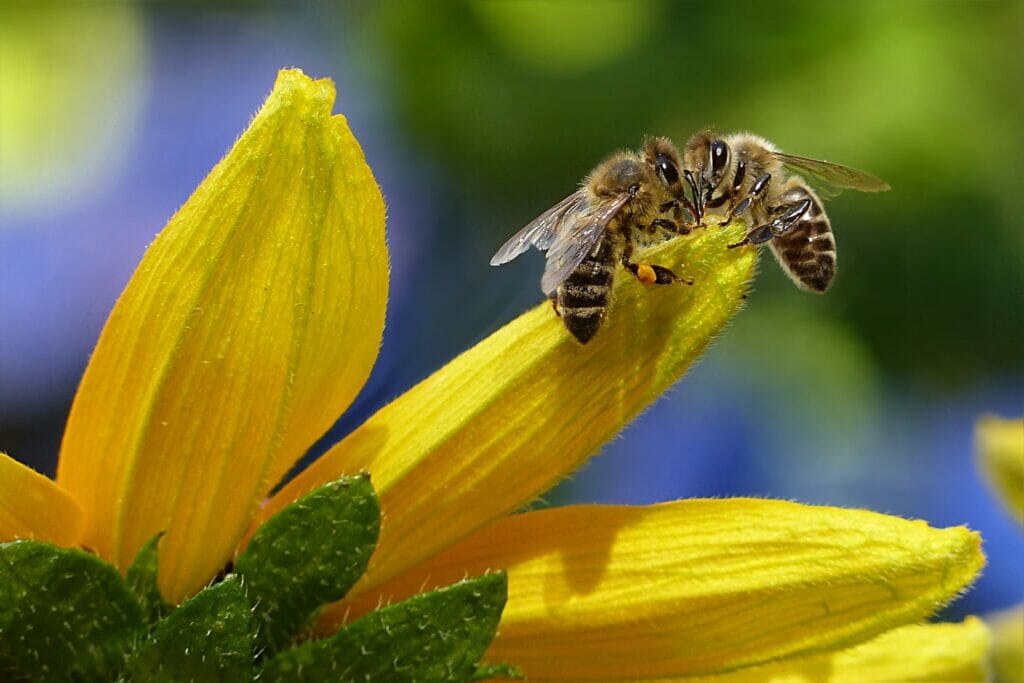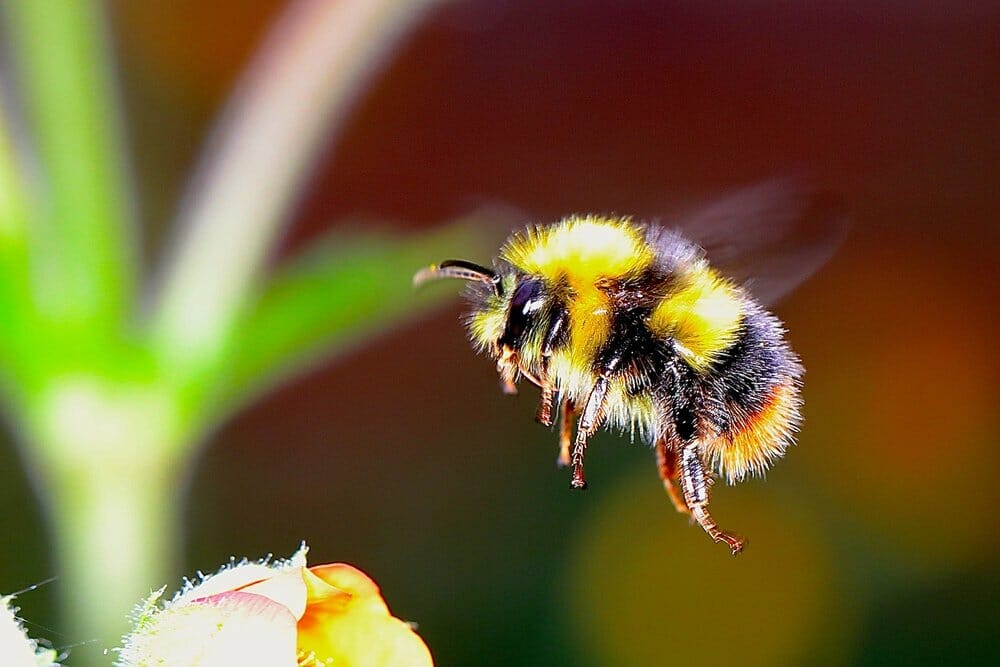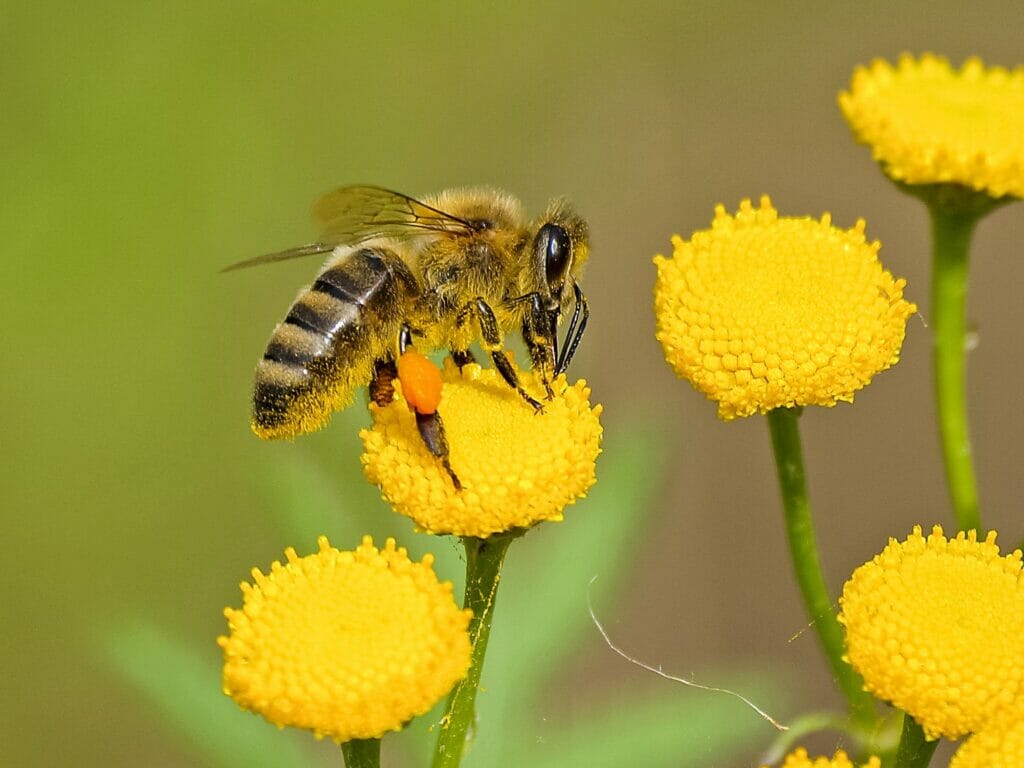Table of Contents
Are bees protected? Despite 25% of bee species being endangered, there are no laws or legislation to protect them.
Although bees are not protected, a process called bee farming is becoming more popular. Bee farming aims to keep bees healthy and in the best pollinating condition possible. Bee farming? I bet nobody does that! But, you see, that’s where you’re wrong. Not only are there UK based charities designed to protect bees, increase their numbers and raise the standard of British beekeeping, but large organisations are also doing it.

Marks and Spencer are a well-known organisation, and as of 2021, they are adding 30,000,000 (yes, thirty million) bees to their 25 bee farms across the UK. However, it is important to note that Marks and Spencers have also received criticism over this move to “do good for the environment” as both environmentalists and other beekeepers claim they are releasing bees to already weakened rural environments.
Throughout the UK, a total of 70 crops are dependent on our wonderful bees. Without bees, these crops and plants would struggle to pollinate, and the impact of this would be vast. For example, many flowers and plants rely upon bees to pollinate them, becoming part of the feed animals on farms. It is estimated that the value of bees in the UK for commercially grown pollinated crops is over £200 million per year.
Why are Bees so Endangered?
Unfortunately for bees, the world is a dangerous place with many threats to their health. Even on a basic level, people have an ever-growing obsession with neat, manicured gardens, which of course means fewer flowers and habitats for bees. Like humans, bees require a good diet to stay healthy.
Most people don’t realise that not only do flowers allow bees to pollinate, but they provide food too. The nectar that bees collect serves as a good source of carbohydrates, while the protein they need is in pollen! Considering that bees fly up to a mile and a half away from the colony each day to collect supplies, they need a good diet! But unfortunately, a decreasing habitat isn’t the only problem that bees are facing.
The increasing use of pesticides is having a massive impact on bee populations and their ability to pollinate. Not only are pesticides adding to the decline of flowers and habitats, but they also mean that bees can take contaminated food back to their nest. If the entire nest is eating ‘poisoned’ food, bees will develop a weaker immune system and become even less protected. As with pesticides, any parasites or diseases that bees pick up along the way are also dangerous to their health and pollination ability.
The final worry a bee faces is humans. Humans generally have a much larger fear of wasps than bees but can’t always tell them apart; sometimes, people try and kill bees unknowingly. Not only this, but some people will even try to remove and destroy beehives. We strongly advise you not to do this.
When you combine all the possible threats a bee faces, it’s pretty simple to see how they’ve become so endangered.
The Bee Way
To understand how bees operate, you first need to know what life is like within a hive. Most people are likely aware of the “Queen Bee” status, but nests also contain worker bees and drones, and each has a job to complete to keep the species going.
The Queen bee is the only female in a nest allowed to reproduce, meaning that she is solely responsible for breeding. But don’t be fooled; Queen bees are incredibly good at their jobs, laying up to 3000 eggs per day! In addition, beehives are a very female rich environment, with all worker bees being female.
The drones (males) are slightly different. Not only do drones have another job, but they look different too. Male bees do not have a stinger, and they have much larger eyes than females. This is because the drone’s sole job is to breed; they even have large eyes to spot Queen bees more easily whilst flying! Every day, drones go out in search of a new Queen to mate with. However, the downside for drones is that they die soon after mating despite their approximately 50-day lifespan.
Types of Bees
Did you know that there are 20,000 various species of bees around the world? You can find two hundred and forty of these in the United Kingdom alone, and it shouldn’t be too much of a shock when we tell you the most common types of bees found in the UK are bumblebees. However, were you aware that there are 24 different types of bumblebees?
Another interesting fact about the bee is that its recognisable colourful striped body is a defensive mechanism. Instead of bees blending into their surroundings like other insects, bees use their bright colours to warn possible predators that they have a stinging weapon. Finally, although we often associate bees with large hives and colonies, it is also possible for bees to live in small nests. These are called solitary bees.
Whenever you see a bee, please remember that they are placid creatures. Although they have a stinger, they will not use it unless they feel threatened. Furthermore, if we told you that bees are responsible for one-third of the food we eat in the UK you might think twice about removing their nest.
Bumblebees
The image we all think of when it comes to bees is probably a replica of the bumblebee. The rounded hairy thorax, angled antennas and big eyes are characteristic of the bumblebee. In addition, they have a well recognised yellow and black striped body. However, within different species, the yellow colour can vary. Furthermore, there is variance in a bee’s size depending on its species and gender, like the colour. Finally, bumblebees typically do not exceed 22mm in length.

Without realising it, you have probably seen red-tailed, white-tailed, garden and field bumblebees within your garden or woodlands at some point in your life. For Queen bumblebees, hibernation generally takes place underground between October and January before breeding, nest making, and work recommences in February.
During the winter months, bumblebee queens venture underground alone to hibernate, using essential fat stores to get them through the cold months.
Honeybees
Compared to bumblebees, honeybees have a smaller and less rounded shape. Whilst the Queens can sometimes reach 20mm in length, honeybees are commonly under 15mm long and have an oval thorax presentation. Furthermore, they have a dark brown shade to their stripes instead of pure black.

Honey bees are only in circulation between April and October, which is not because they hibernate. Instead, during cold months, honeybees cluster together within their nests to stay warm and survive from the shared food supply.
It’s important to note that most worker bees and drones naturally die just before wintertime. Only winter worker bees and the Queen Bee will hibernate.
Solitary Bees
Now that we have mentioned the well-known honeybees and bumblebees, it’s crucial that we cover solitary bees. The majority of the bees within the UK are solitary bees and they are extremely effective pollinators. Solitary bees are made up of a variety of different bee species, some of which include:
- Mining bees
- Mason bees
- Flower bees
- Sweat bees

Due to the variation in solitary bee species, their winter hibernation habits differ. Typically, during the winter months the female lays her eggs and deposits her gathered pollen and nectar for the eggs to feed on as they develop into adults.
Bumblebee vs Honeybee Nest
A significant difference between various species of bees is how many live within a given nest. For example, bumblebee hives will typically only contain up to 400 bees, a massive contrast to a potentially 50,000 substantial nests of honeybees.
Another difference is the structure of the nest itself. To account for the larger population, honeybees have fairly structured and organised nests made up of hexagonal shaped cells. On the other hand, bumblebees live in a reasonably unorganised environment with no apparent structure.
Whatever the nest size, there is also potential for it to become overcrowded; this is when swarms are seen. A swarm is when bees surround the outside of a nest (maybe even an entire branch or tree), resulting in a dark cloud. It is understandable why people become uneasy at the sight of a bee swarm; however, the bees still mean no harm. They are simply waiting near the nest until a new home can be found or created. Therefore, if you don’t aggravate the bees, they won’t disturb you.
Bees vs Wasps
It’s fair to see why people can sometimes confuse the two insects. Although wasps are typically slightly longer, the two have a similar body shape, colour and they both buzz around your head. However, since wasps don’t collect pollen, they don’t need that ‘furry’ body bees have, giving them a shinier appearance.
Another difference is the number of times the insects can use their stingers. It’s a reasonably well-known fact that after a bee uses its stinger, it will die shortly after. The stinger is attached to their muscular, nervous and digestive systems, so everything is pulled out when a bee stings you! Wasps, however, can sting more than once; therefore, although they only sting if they detect a threat, they are sometimes more aggressively natured.
A final difference between wasps and bees is their nests. Typically, wasp nests have a more grey, papery appearance than beehives, and if you see one built on the floor, it’s very likely to be a wasp nest. However, it’s always best to get a professional opinion. Feel free to check out our “How to Get Rid of a Wasps Nest” blog.
I’ve Found a Bee Nest. What do I do?
Unless the bee’s nest is in a place where it could be easily disturbed, the best thing to do is leave it alone. Neither the bees nor the nest will provide any threat to you if you can leave them alone without bother. In fact, by leaving the next alone, you are helping to keep bees protected by keeping them near a source of pollen and food.
Due to a bee’s lifespan, most nests will disappear on their own as the remaining bees flee to create a new nest for the next working season. However, if the nest is near a doorway, for example, there are two steps to consider, both of which would require you to contact an expert. Since bees are endangered, a preferred option for a bee nest would be relocation, an option that a local beekeeper or pest controller could offer.
An alternative step is to eradicate the bees through treatment completely, which we always strive to avoid. However, please remember, do not attempt to remove the nest yourself; it can be extremely dangerous for an untrained individual to perform.
Can I keep bees away?
The first question we would ask is, why do you want to?
By allowing bees to nest at your property, you are helping to protect them. However, if you wish to preserve particular areas, please avoid the use of pesticides.
There are a few natural remedies that can deter bees without harming them. Most of them relate to specific scents. In terms of using plants, bees dislike the smell of peppermint and citronella, so something as simple as planting these can have a repellent effect on bees and help to keep areas like doorways clear. A similar alternative is the use of cinnamon or garlic spray; again, bees dislike the smell, meaning they will avoid nesting nearby; unfortunately, garlic spray may drive your neighbours away too.
A final option is the use of smoke. If bees detect smoke, they flee to protect themselves. However, this option has a few additional risks. Not only do you have to ensure you’re making a safe and controlled fire, but it also risks aggravating the bees, which could result in them harming you if you stick around to watch them leave.
So, are bees protected? Officially, no. However, we can take plenty of steps to do our bit; and don’t forget, if in doubt, call us on 0204 566 5522 or email our professional team at [email protected] to learn more about our safe bee removal services if they pose a safety risk to your home or business.